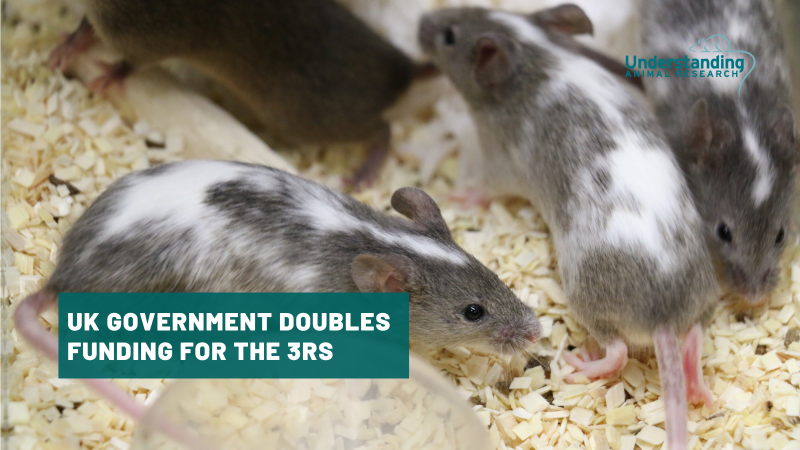Most GM animals are used in genetic studies, and nearly all of them are mice and rats. They may be used in basic research to discover the function of a particular gene - in embryonic development or the ageing of cells, for instance - or in the study of diseases.
Terminology
There are numerous terms used to describe animals that have had their genes changed in some way. This can make things confusing; however, these terms are often used interchangeably and are considered to have similar if not identical meanings:
- Genetically altered (GA)
- Genetically modified (GM)
- Genetically engineered (GE)
The UK government makes a slight distinction between GM and GA. It classifies GM organisms as those which have been genetically changed, and GA organisms include both GM organisms and those carrying 'natural' mutations.
Other terms used include transgenic and knockout. Transgenic refers to a subtype of GM animals whose genomes have been altered by the insertion of DNA from another organism. A knockout animal has had one or more genes inactivated or silenced.
The history
In 1981 British researcher Sir Martin Evans developed a way to grow embryonic stem cells from mouse embryos. Because these cells grow indefinitely in the lab, he found it was possible to genetically alter them. When these genetically altered cells were mixed with the cells of another early embryo, they produced mice which could pass on the new genes to the next generation.
By 1989 another team had used this technique to produce knockout mice. These mice can provide information about the roles of single genes in organisms. It is possible to study almost every aspect of mammalian physiology in this way. The technique has been used for research in fields as diverse as cancer, immunology, neurobiology, human genetic disorders and endocrinology.
Sir Martin himself has used knockout mice in studying cystic fibrosis and breast cancer. As the Nobel Assembly said in awarding the prize for gene targeting: “Its benefits to mankind will continue to increase over many years to come.”
GM mice are useful in the study of many diseases that are inherited or partially inherited caused by faults in an individual's genetic code. Some serious, potentially fatal illnesses like sickle cell disease or cystic fibrosis are caused solely by having faulty genes. Some long-term illnesses such as diabetes or rheumatoid arthritis have many causes that include faulty genes, combined with other factors such as infection.
Sometimes animals have exactly the same genetic fault that humans do. For example, there is a kind of mouse which naturally develops muscular dystrophy, and this animal is important for research into that illness. However, this is not always the case, so the ability to alter genes and breed strains of mice and other animals that develop a particular inherited disease could lead to treatments for cystic fibrosis, sickle cell disease and other inherited or partially inherited diseases.
Why have the numbers risen in the last decade?
GM animals are the main reason the number of experiments in the UK has been rising in the last decade. Genetic modification (mostly of mice) now accounts for half of all animal procedures in the UK. Breeding to produce GA animals mainly involves mice (approx 88-86% per year) with the rest of all procedures mainly involving zebrafish. Click here for more information on the number of animals used in the UK, including the latest statistics.
Some animals in the breeding category are normal (not GA) parent animals; on the other hand, breeding is not the primary purpose recorded for all genetically altered (GA) animals. So, while there is considerable overlap of some one million procedures, breeding procedures and procedures involving GA animals are not the same thing. In numerical terms, this means that around a quarter of a million breeding procedures involved normal mice, while over half a million procedures involving GA mice were not primarily for breeding. These animals would have been used in other recorded procedures. Similarly, about four-fifths of GA fish procedures were primarily for breeding. A small proportion of breeding procedures involved normal fish.



